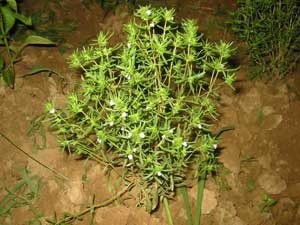
Botanical Name:
Satureja hortensis
Common names:
Summer Savory, Savory
Description:
Summer savory is native to the Mediterranean. In Ancient Rome, it was thought to be a powerful aphrodisiac. In the 1500s, Shakespeare wrote about it in A Winter's Tale. Today, summer savory is grown widely for its culinary properties. Most cooks feel that its strong, spicy flavor is superior to that of its perennial relative, winter savory. Summer savory grows about 12 inches tall on slender, upright stems that tend to flop over if not supported. The plant's foliage consists of small, narrow leaves and pretty, but inconspicuous, pale pink flowers.
Life Cycle:
hardy annual
Exposure:
full sun
Cultivation:
You may want to give summer savory a corner of its own in the garden. Plants will readily reseed themselves if left alone and can quickly spread seedlings to other parts of the garden. Sow seeds in the spring, thinning seedlings to six inches apart when they grow big enough to handle. Plants need a sunny location and light well-drained soil. Sow seeds where you want them to grow as they dislike being transplanted.
Propagation:
seeds
Parts Used:
leaves
Harvesting and Storage:
for best flavor, cut and dry leaves as needed
Medicinal Uses:
digestive aid; antiseptic; relief from insect stings
Culinary Uses
flavor for beans, soups and stews; flavored oils and vinegars; sausage making
Other Uses:
dried flowers; arrangements and rock gardens; companion plants for beans
